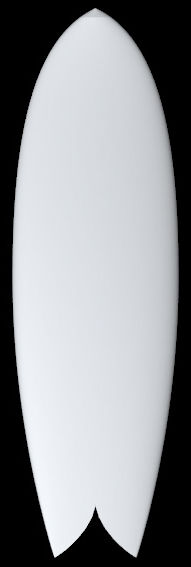
BRUCE HANSEL BALI SURFBOARDS
TAILS,RAILS and BOTTOMS
Tails

Square

Squash

Round

Round Pin

Diamond

Swallow

Fish

Wing

Pin
Square and Squash
Square tails are used mostly on long boards. The square corners give the rider a lot of leverage and lift to pivot off of. The Squash is by far the most popular tail for High Performance Short Board. The Squash provides what many feel is the ideal balance between lift and release - the shape produces sharp but fluid turns.
Swallow and Diamond
These are cut-away tail shapes, which have portions of the tail removed in order to provide better release and less surface area, while maintaining straighter, more square rail templates in the last foot or so for drive. Swallow tails create two distinct points where the rail line ends and flex for added looseness. Diamond tails have the corners of what would be a square tail cut off, producing a diamond shaped tail block, that produces a shorter rail line than the board is long at the stringer making the board drive off the length and pivot off the shortened rail.
Round, Round Pin, and Pin
Round tails, sometimes referred to as “thumb” tails, provide the most lift out of the curved tail designs. Release is smooth along the rail, but the rail template is straighter in the full round tail than the next tail down the line – the Round Pin.The feeling can be very similar to the squash tail, but tends to produce smoother, more open turns. The Round Pin, however, pulls the tail template in much sooner, feeding into a pulled but curved tail shape with less curve acceleration where the rails converge. Due to the reduced planing surface of rounded pins, the back foot is placed further forward than would be placed on a squash or rounded square tail, making these tail shapes better suited for large, steep, hollow surf and making quick adjustments dropping in late and negotiating the Barrel. True pin tails are reserved for big wave guns, as surface area and lift are severely minimized in an effort to focus on control and easy rail-to-rail transfer at top speeds.
Bottom Contours

Concave

Double Concave

Spiral V = V with Double Concave
